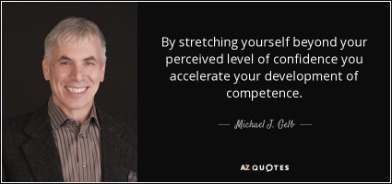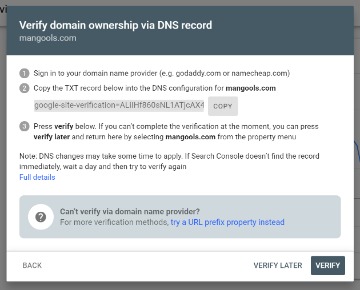Contents
The Williams Act was passed in 1968 to protect shareholders and management from takeover attempt by corporate raiders making cash tender offers. In many instances, investors gain control of target companies in less than one month if shareholders accept their offers; they also generally earn more than normal investments in the stock market. A tender offer is a public solicitation to all shareholders requesting that they tender their stock for sale at a specific price during a certain time. The ask price is the lowest price that someone is willing to sell a stock for .

The bid-offer spreads on large companies in the FTSE 100 which trade in huge volumes every day tend to be tiny. Smaller companies can have very big spreads, as they are harder to trade, so an investment in a very small company can easily be worth 10%-15% less than the price you paid for it as soon as you have bought it. In particular, they are set by the actual buying and selling decisions of the people and institutions who invest in that security. If demand outstrips supply, then the bid and ask prices will gradually shift upwards.

For example, investors are not obligated to buy shares until a set number is tendered, which eliminates large upfront cash outlays and prevents investors from liquidating stock positions if offers fail. Acquirers can also include escape clauses, releasing liability for buying shares. For example, if the government rejects a proposed acquisition citing antitrust violations, the acquirer can refuse to buy tendered shares. Bid-ask spreads can vary widely, depending on the security and the market. Both are important in executing a trade, and investors must be well versed with these terms.
Selected Bidder means the bidder who has been selected by DMRC, pursuant to the bidding process for award of license. I/WE do hereby Bid and offer to enter into a Contract to do all the Work as specified in the Bid Document which shall include all costs but not limited to; freight, duty, currency, etc. Pre-1986 contracts had been costed and bid at pre-devaluation rates.
It is used when a trader is certain of a price or when the trader needs to exit a position quickly. Its bid document also said 23 billion reais would be spent on infrastructure projects. But the lack of competition for the deal drew criticism, so the commission called for bids from competing boat tour operators for the first time. Five of them promised not to participate in bidding on the project. Their million-dollar bid for the company was trumped at the last moment by an offer for almost twice as much from their main competitor.
The bidding process involves sending out packages to interested parties. A maintenance bond is purchased by a contractor to protect the owner from the costs to remedy a completed construction project’s defects. While having good credit is always helpful in matters like these, those with poor credit may still be able to obtain bid bonds from companies that agree to do so, but these will often be more costly to obtain. A bid bond guarantees compensation to the bond owner if the bidder fails to begin a project. Bid bonds are often used for construction jobs or other projects with similar bid-based selection processes. Ask size is the amount of a security that a market maker is offering to sell at the ask price.
An Illustration of How Bid, Ask, and Last Prices Affect Day Trading
The regulations help targeted https://topforexnews.org/es reject the offer if it’s contraindicated for their company. Tender offers are subjected to strict regulation in the United States. The regulations serve as a means of protection for investors and also act as a set of principles that stabilize businesses targeted by those making tender offers. The rules give the businesses a foundation to stand on so that they can respond to any potential takeover attempts. There are many regulations for tender offers; however, there are two that stand out as the strictest.
- A retract is the withdrawal of a bid, offer, or statement before any relevant party acts on the information provided.
- Tender offers are subjected to strict regulation in the United States.
- If the current bid were $12.01, and a trader were to place a bid at $12.02, the bid-ask spread would be narrowed.
The cost of the bond depends on several factors, including the jurisdiction of the project work, bid amount, and contractual terms. Quotes will often show the national best bid and offer from across all exchanges that a security is listed. That means that the best bid price may come from a different exchange or location than the best offer. Tender offers can be incredibly fruitful for the investor, group, or business seeking to acquire the major portion of a company’s stock. When done without the company’s board of director’s knowledge, they are seen as a form of hostile takeover. It’s important for companies to pay attention to the rules and regulations that govern such offers.
The https://forex-trend.net/ of stock purchased in a tender offer become the property of the purchaser. From that point forward, the purchaser, like any other shareholder, has the right to hold or sell the shares at their discretion. The last price is the one at which the most recent transaction occurs, while the market price is whatever price the brokerage can find to fulfill your order as soon as possible. If you’re buying a stock, then the market price is the ask price at that moment. Note that these prices may change rapidly, even in the seconds it takes to fill out an order form.
Bid and offer definition
The other main types of construction bonds are performance and payment bonds. The Williams Act is an amendment to the Securities Exchange Act of 1934. The latter act is considered, to date, one of the most significant securities laws ever enacted in the U.S. The Williams Act wasn’t added to the Securities Exchange Act until 1968, when New Jersey Senator Harrison A. Williams proposed the amendment. Several antique dealers bid up the best lots to shut out less experienced bidders.

The tick and pip units of measure are established to demonstrate the most basic movements in an investment. In the active futures markets, the tick is used—generally, the spread is one tick. One tick is worth $1 and is divided into four increments, valued at $.25 each. If a bid is $10.05, and the ask is $10.06, the bid-ask spread would then be $0.01. The bid-ask spread can be measured using ticks and pips—and each market is measured in different increments of ticks and pips. If someone wants to buy right away, they can do so at the current ask price with a market order.
Who Benefits from the Bid-Ask Spread?
The ask or offer price displayed is the lowest ask/offer price in the market . A tender offer often occurs when an investor proposes buying shares from every shareholder of a publicly traded company for a certain price at a certain time. The investor normally offers a higher price per share than the company’s stock price, providing shareholders a greater incentive to sell their shares.
In most cases, those that extend a tender offer are looking to acquire at least 50% of the company’s shares in order to take control of the company. For example, Company A has a current stock price of $10 per share. An investor, seeking to gain control of the corporation, submits a tender offer of $12 per share with the condition that they acquire at least 51% of the shares. In corporate finance, a tender offer is often called a takeover bid as the investor seeks to take over control of the corporation. A publicly traded company issues a tender offer with the intent to buy back its own outstanding securities.
Similar to all other prices on an exchange, it changes frequently as traders react and make moves. The ask price is a fairly good indicator of a stock’s value at a given time, although it can’t necessarily be taken as its true value. If the current bid on a stock is $10.05, a trader might place a limit order to also buy shares for $10.05, or perhaps a bit below that price. If the bid is placed at $10.03, all other bids above it must be filled before the price drops to $10.03 and potentially fills the $10.03 order. The bid price represents the highest-priced buy order that’s currently available in the market. The ask price is the lowest-priced sell order that’s currently available or the lowest price that someone is willing to sell at.
A https://en.forexbrokerslist.site/ price is the highest price that a buyer (i.e., bidder) is willing to pay for some goods. In bid and ask, the bid price stands in contrast to the ask price or “offer”, and the difference between the two is called the bid–ask spread. An unsolicited bid or purchase offer is when a person or company receives a bid even though they are not looking to sell. To tender is to invite bids for a project or accept a formal offer such as atakeover bid.
The bid price is the highest price a buyer is willing to pay for a security or asset. Generally, a bid is lower than an offered price, or “ask” price, which is the price at which people are willing to sell. The difference between the two prices is called a bid-ask spread. The effective spread is more difficult to measure than the quoted spread, since one needs to match trades with quotes and account for reporting delays (at least pre-electronic trading). Moreover, this definition embeds the assumption that trades above the midpoint are buys and trades below the midpoint are sales.
The rationale behind the same is that buyers always wanted to buy at lesser prices than the initial offer’s price.The offer price is always higher than the bid price. The bid price is the amount of money a buyer is willing to pay for a security. It is contrasted with the sell price, which is the amount a seller is willing to sell a security for. The difference between these two prices is referred to as the spread. Whether at an auction or in the market, the highest price that a buyer can pay for a product or a service is called bid price.